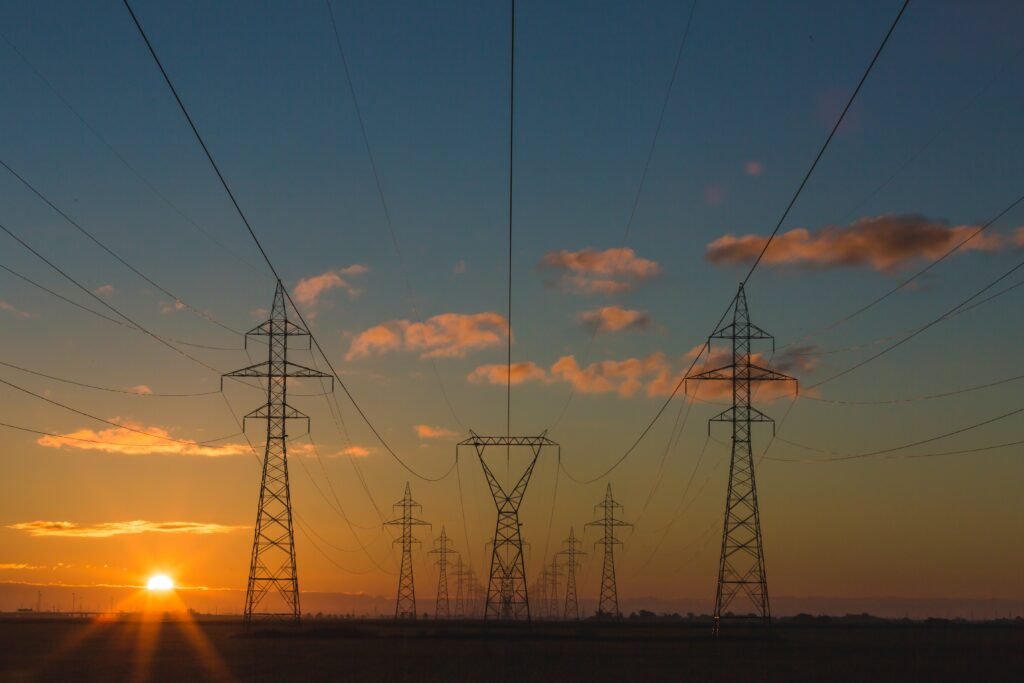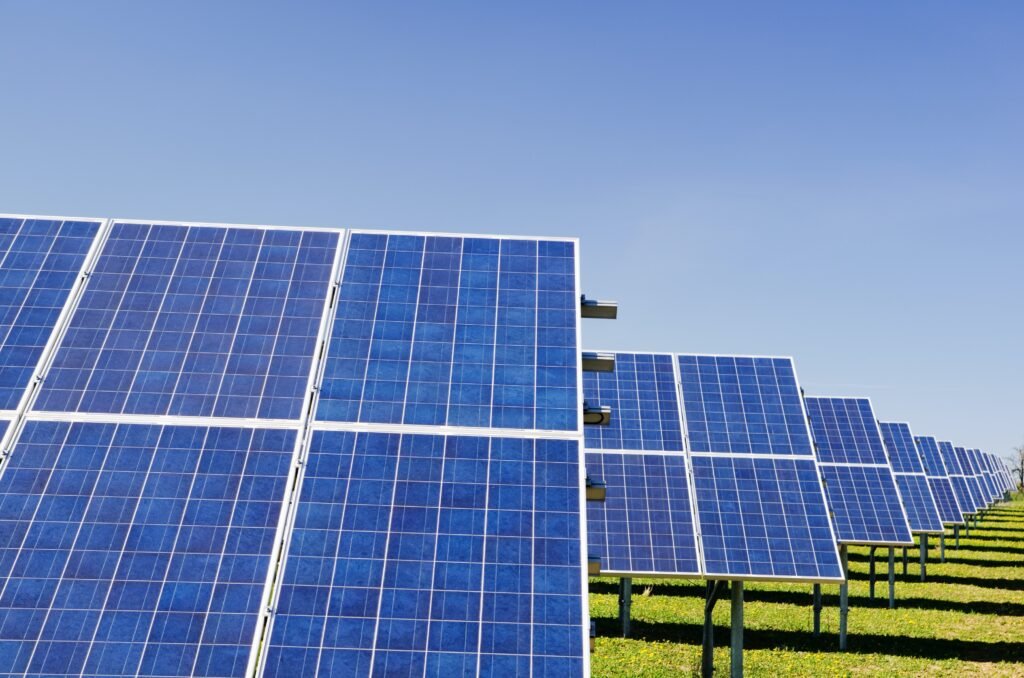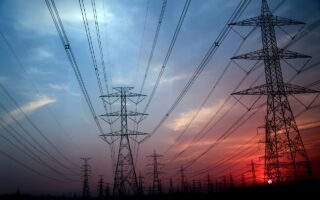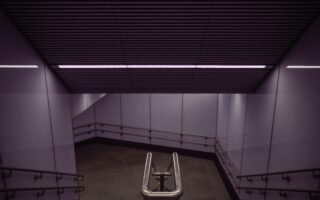Are you looking to maximize the efficiency of your LED usage? Look no further! In this article, we will provide you with a comprehensive guide on how to optimize the usage of LED lights. From selecting the right LED bulbs to implementing smart lighting controls, we will explore various techniques that can help you reduce energy consumption and save money on your electricity bills. So, whether you are a homeowner or a business owner, get ready to discover the secrets of efficient LED usage and unlock the benefits of eco-friendly lighting solutions.

This image is property of images.unsplash.com.
Factors Affecting LED Efficiency
LED Design
The design of an LED plays a crucial role in determining its efficiency. Factors such as the materials used, the size of the chip, and the arrangement of the components can significantly impact its performance. LEDs with superior design tend to have better heat dissipation capabilities, higher luminous efficacy, and longer lifespan.
Energy Input
The energy input to an LED directly affects its efficiency. LEDs are highly energy-efficient compared to traditional lighting technologies, but the amount of power they consume can still vary. Choosing LED bulbs with lower wattage can help reduce energy consumption while maintaining adequate brightness levels.
Heat Management
Heat management is a critical aspect of LED efficiency. LEDs generate heat as a byproduct of their operation, and excessive heat buildup can impact their performance and lifespan. Proper heat dissipation mechanisms, such as heat sinks and thermal pads, are essential to ensure that the LEDs operate at optimal temperatures, thereby maximizing their efficiency.
Optical Efficiency
The optical design of an LED determines how effectively it converts electrical energy into visible light. Factors such as the shape of the lens, the reflectivity of the internal components, and the overall light distribution pattern influence the optical efficiency of an LED. LEDs that have been optimized for high optical efficiency produce brighter light while consuming less energy.
Color Temperature
The color temperature of an LED refers to the perceived color of the light it emits. Different applications require different color temperatures, ranging from warm, yellowish light to cool, bluish light. By choosing the appropriate color temperature, you can ensure that the LED lighting is well-suited to its intended purpose, optimizing the overall efficiency of the lighting system.
Choosing the Right LED Bulb
Lumens vs Watts
When selecting an LED bulb, it’s important to consider both the lumen output and wattage. Lumens indicate the brightness of the light produced, while watts refer to the energy consumption. By comparing lumens to watts, you can determine the efficiency of an LED bulb. Higher lumen output with lower wattage signifies a more efficient bulb.
Color Rendering Index (CRI)
The Color Rendering Index (CRI) is a measure of an LED’s ability to accurately render colors. A higher CRI indicates better color accuracy and is essential for applications where color distinction is crucial, such as art galleries or retail stores. Choosing LED bulbs with a high CRI ensures that colors appear vibrant and true to life.
Color Temperature
The color temperature of an LED bulb affects the ambiance and mood of a space. Warm white light with lower color temperatures creates a cozy and inviting atmosphere, while cool white light with higher color temperatures is ideal for areas that require a bright and energizing environment. Selecting the appropriate color temperature enhances both the visual appeal and the efficiency of the LED lighting.
Beam Angle
The beam angle of an LED bulb determines the spread of the light it emits. A larger beam angle provides wider coverage, making it suitable for general lighting purposes. On the other hand, a narrower beam angle concentrates the light in a specific direction, making it ideal for accent lighting or task lighting. Choosing the right beam angle ensures that the light is distributed efficiently and effectively.
Dimmable vs Non-dimmable
LED bulbs can be either dimmable or non-dimmable. Dimmable bulbs allow you to adjust the brightness according to your preference or lighting needs. This feature not only offers flexibility but also helps optimize energy usage. Non-dimmable bulbs, on the other hand, offer a standard brightness level and are suitable for spaces that do not require adjustable lighting.
Optimizing LED Placement
Lighting Layout
The layout of LED fixtures plays a significant role in optimizing lighting efficiency. Strategic placement and arrangement of the fixtures ensure that the light is evenly distributed, minimizing wasted light and reducing energy consumption. By planning the lighting layout carefully, you can achieve efficient illumination for the entire space.
Task-Specific Lighting
Tailoring LED lighting to specific tasks or activities helps maximize efficiency and reduce energy waste. Installing task-specific lighting, such as desk lamps or under-cabinet lighting, provides focused illumination precisely where it is needed, eliminating the need for excessive general lighting. This targeted approach enhances both visual comfort and energy savings.
Avoiding Over-Lighting
Over-lighting occurs when an excessive amount of light is provided for a particular space or task. This not only wastes energy but can also cause discomfort and glare. By carefully assessing the lighting requirements of each area and avoiding over-lighting, you can ensure optimal brightness levels while maintaining energy efficiency.
Minimizing Shadows
Shadows can create dark areas that require additional lighting, increasing energy consumption. Proper placement and angling of LED fixtures can help minimize the formation of shadows, ensuring uniform illumination across the space. By reducing shadows, you can maximize lighting efficiency and create a visually pleasing environment.
Lighting Controls
Implementing lighting controls, such as sensors or timers, allows for optimized LED usage and energy savings. Occupancy sensors detect movement and turn on the lights when someone enters a room, eliminating the need to manually switch them on and off. Timers can be used to automatically adjust lighting levels based on the time of day, further enhancing energy efficiency.
Maximizing LED Lifespan
LED Quality
The quality of an LED significantly impacts its lifespan and performance. High-quality LEDs are designed to withstand long operational hours and have better resistance to environmental factors such as heat and moisture. When choosing LED bulbs or fixtures, it is essential to opt for reputable brands known for their quality and durability, ensuring a longer lifespan and optimal efficiency.
Proper Installation
Proper installation of LED bulbs and fixtures is crucial for maximizing their efficiency and longevity. Following manufacturer guidelines and ensuring correct wiring and mounting procedures are essential steps. Improper installation can lead to heat buildup, reduced performance, and premature failure. By adhering to proper installation practices, you can maintain the efficiency and lifespan of your LEDs.
Avoidance of Overdriving
Overdriving an LED refers to operating it at higher currents or voltages than recommended by the manufacturer. This can result in increased heat generation, accelerated degradation, and decreased efficiency. Adhering to the specified operating parameters ensures that LEDs perform optimally and have a longer lifespan, minimizing the need for frequent replacements.
Cleaning and Maintenance
Regular cleaning and maintenance are critical for extending the lifespan of LED fixtures. Dust, dirt, and other contaminants can accumulate on the surfaces of the LEDs, leading to reduced light output and overheating. By periodically cleaning the fixtures and ensuring they are free from obstruction, you can maintain the efficiency and performance of the LEDs.
Avoiding Rapid Switching
Rapid switching refers to frequently turning the LED lights on and off within a short period. This can put stress on the electrical components and lead to premature failure. Instead, it is advisable to use gradual dimming or employ motion sensors that control the lighting based on occupancy. By avoiding rapid switching, you can enhance LED lifespan and maintain optimal efficiency.

This image is property of images.unsplash.com.
Energy-Saving Techniques
Using LED Dimmers
LED dimmers allow you to adjust the brightness of the lights according to your needs, which not only enhances flexibility but also optimizes energy consumption. By dimming the lights when maximum brightness is unnecessary, you can significantly reduce energy usage and extend the lifespan of the LED bulbs.
LEDs in Combination with Sensors
Combining LED lighting with occupancy sensors or daylight sensors allows for automated control of lighting based on occupancy or natural light availability. Occupancy sensors detect movement and switch the lights on only when needed, ensuring lights are not left on unnecessarily. Daylight sensors adjust the lighting level based on the amount of natural light present, further maximizing energy savings.
Time-Based Control Systems
Installing time-based control systems enables automatic scheduling of lighting based on specific timeframes. This is especially beneficial in commercial settings where lighting requirements vary throughout the day. By programming the lighting system to turn on and off at predetermined times, you can avoid unnecessary energy consumption during unoccupied periods.
Daylight Harvesting
Daylight harvesting is a technique that utilizes natural daylight to supplement artificial lighting. By integrating sensors that measure the amount of natural light available, the LED lighting system can automatically adjust its output to maintain a desired level of illumination. This technique reduces the reliance on artificial lighting during daylight hours, resulting in significant energy savings.
Zoning and Grouping
Dividing the space into zones and grouping LED fixtures according to their functionality allows for targeted lighting control and energy optimization. By independently controlling the lighting in different zones, you can tailor the brightness levels to the specific activities or occupant preferences in each area. This zoning strategy helps prevent unnecessary energy consumption, leading to enhanced efficiency.
LED Retrofitting for Efficiency
Upgrading Existing Lighting
LED retrofitting involves replacing traditional lighting fixtures with LED equivalents. By upgrading existing lighting systems, you can take advantage of the superior efficiency and longevity of LED technology. LED retrofitting not only reduces energy consumption but also eliminates the need for frequent bulb replacements, resulting in long-term cost savings.
Compatibility Considerations
When retrofitting existing lighting, it is essential to consider the compatibility of the LED bulbs or fixtures with the existing wiring and control systems. Ensuring that the new LEDs are compatible with the electrical setup avoids complications during installation and ensures the optimal performance of the retrofitting project.
Optimal Light Distribution
During LED retrofitting, it is crucial to assess and optimize the light distribution to ensure uniform and efficient illumination. This may involve adjusting the layout, adding additional fixtures, or installing reflectors to enhance light spread. By optimizing light distribution, you can achieve better lighting uniformity while minimizing energy waste.
Energy Rebate Programs
Many utility companies and government bodies offer energy rebate programs to incentivize energy-efficient upgrades. These programs provide financial assistance or rebates to individuals or businesses that undertake LED retrofitting projects. Taking advantage of such programs can significantly reduce the upfront costs of retrofitting and contribute to long-term energy savings.
Professional Assistance
LED retrofitting projects can be complex, especially for larger spaces or more intricate lighting systems. Seeking professional assistance from lighting designers or electrical contractors experienced in LED retrofits can ensure that the project is executed seamlessly and efficiently. Professionals can provide valuable guidance on product selection, installation, and lighting design to optimize the overall efficiency of the retrofit.

This image is property of images.unsplash.com.
Ensuring Safety and Compliance
Meeting Electrical Standards
When installing LED fixtures or conducting retrofit projects, it is crucial to adhere to applicable electrical standards and codes. Compliance with electrical safety regulations ensures that the LED lighting system operates safely and efficiently. Proper grounding, wiring, and protection against electrical hazards are key aspects of meeting these standards.
Proper Wiring Practices
Proper wiring practices are essential when installing or connecting LED lighting systems. Following industry-standard wiring practices helps minimize the risk of electrical issues, such as short circuits or fire hazards. It is important to ensure that wiring connections are secure, insulation is intact, and appropriate wire gauges are used to handle the load safely.
LEDs and Heat Generation
LEDs generate heat during operation, and excessive heat buildup can affect their performance and lifespan. Proper heat management techniques, such as incorporating heat sinks or ensuring adequate ventilation, are necessary to dissipate heat efficiently. By addressing heat generation and implementing effective thermal management, you can maintain the safety and efficiency of the LED lighting system.
Avoiding Fire Hazards
LEDs operate at low voltages and generate less heat compared to traditional lighting technologies. However, it is still crucial to take precautions to prevent fire hazards. Ensuring that LED fixtures and wiring are installed correctly and maintained properly reduces the risk of electrical faults or overheating, thus minimizing the potential for fire accidents.
Regulatory Compliance
When using LED lighting, it is important to comply with applicable regulations and guidelines specific to your region or industry. These regulations may include specific lighting requirements, energy efficiency standards, safety certifications, or environmental considerations. Compliance with these regulations ensures that your LED lighting system meets the necessary standards and operates within the legal framework.
Understanding LED Lifespan and Degradation
LED Degradation Over Time
LEDs experience gradual degradation over time, resulting in reduced light output and color shift. This degradation occurs due to factors such as aging of materials, temperature variations, and electrical stress. Understanding the degradation process helps in managing LED lifespan and optimizing efficiency over the long term.
Understanding L70 and Lumen Maintenance
L70 is a common metric used to quantify LED lifespan. It indicates the number of hours an LED can operate before reaching 70% of its initial lumen output. Lumen maintenance refers to the ability of an LED to maintain its brightness levels over time. By considering L70 and lumen maintenance values, you can predict how long an LED will last before its light output starts to diminish significantly.
Factors Affecting Lifespan
Several factors can affect the lifespan of an LED. These include operating conditions, such as temperature and humidity, as well as the quality of the LED itself. High-quality LEDs, proper heat management, and operating the LEDs within their specified parameters help maximize their lifespan and maintain optimal efficiency.
Operational Hour Limitations
LEDs have operational hour limitations beyond which their performance may deteriorate or their lifespan may be significantly shortened. Manufacturers often specify the maximum recommended operational hours to ensure optimal performance and reliability. By being aware of these limitations, you can plan for timely replacements or maintenance, promoting efficient and reliable lighting.
Predicting LED Lifespan
Predicting the lifespan of an LED involves considering various factors, such as the quality of the LED, the operating conditions, and the workload. Manufacturers often provide estimated lifespan values based on laboratory testing and standardized conditions. However, it is important to note that real-world conditions may vary, and individual LEDs may have different lifespans even within the same batch. Monitoring the performance of LEDs over time helps refine predictions and facilitates proactive maintenance planning.
LED vs Traditional Lighting Technologies
Energy Efficiency Comparison
LEDs are renowned for their high energy efficiency compared to traditional lighting technologies. They require significantly less power to produce the same amount of light, resulting in substantial energy savings. By transitioning from incandescent bulbs or fluorescent lamps to LEDs, you can achieve remarkable reductions in energy consumption and lower utility bills.
Environmental Impact
LEDs offer several environmental advantages over traditional lighting technologies. They are mercury-free, unlike compact fluorescent lamps (CFLs), making them safer for disposal and reducing the risk of environmental contamination. Additionally, the reduced energy consumption of LEDs helps lower greenhouse gas emissions, contributing to a greener and more sustainable future.
Maintenance Requirements
LEDs have significantly longer lifespans compared to traditional lighting technologies. Incandescent bulbs and fluorescent tubes often require frequent replacements, leading to increased maintenance costs and waste generation. LED lighting, on the other hand, has minimal maintenance requirements, resulting in reduced costs and less material waste.
Instant-On Performance
One of the notable advantages of LEDs over traditional lighting technologies is their instant-on capability. LEDs reach full brightness instantly when switched on, eliminating the warm-up period required by fluorescent tubes or HID lamps. This instant-on performance is not only convenient but also contributes to energy efficiency, as the lights can be used only when needed.
Cost Analysis
While the upfront cost of LED bulbs may be higher than that of traditional lighting technologies, it is important to consider the long-term cost benefits. LEDs offer better energy efficiency, longer lifespans, and reduced maintenance requirements, resulting in significant cost savings over time. When conducting a cost analysis, it is crucial to consider the total cost of ownership rather than just the initial purchase price.
Future Developments and Innovations
Advancements in LED Technology
LED technology continues to evolve at a rapid pace, leading to advancements in efficiency, color accuracy, and durability. Ongoing research and development efforts are focused on improving LED efficacy, reducing costs, and enhancing performance. As a result, future LED products are expected to offer even greater efficiency and innovative features.
Efficiency Improvements
Efficiency improvements are a key area of focus in LED development. Manufacturers are constantly working on enhancing the luminous efficacy of LEDs, allowing them to produce more light while consuming less energy. These improvements contribute to further energy savings and reduced environmental impact.
Smart LED Systems
The integration of LED lighting with smart technology opens up new possibilities for energy optimization and intelligent control. Smart LED systems can be integrated into building management systems or home automation networks, allowing for centralized control and automated adjustments based on occupancy, time schedules, or preset preferences. These systems help maximize energy efficiency while providing enhanced lighting functionality and convenience.
Integration with IoT
The Internet of Things (IoT) offers a vast network of interconnected devices and systems. LED lighting can be seamlessly integrated into IoT platforms, allowing for advanced monitoring, control, and data analysis. By connecting LED fixtures to IoT-enabled networks, you can gain valuable insights into energy usage patterns, optimize lighting schedules, and proactively address maintenance needs.
Energy Harvesting
Energy harvesting is a concept that involves capturing and utilizing ambient energy sources to power electronic devices. This technology can be applied to LED lighting systems, allowing them to operate using harvested energy from sources such as solar panels or kinetic energy converters. Energy harvesting not only enhances the sustainability of LED lighting but also reduces reliance on traditional power sources.
As the demand for energy-efficient lighting solutions continues to grow, advancements in LED technology are expected to drive significant improvements in efficiency, performance, and functionality. By staying informed about the latest developments and implementing the best practices outlined in this guide, you can optimize LED usage for maximum efficiency, cost savings, and environmental benefits.



